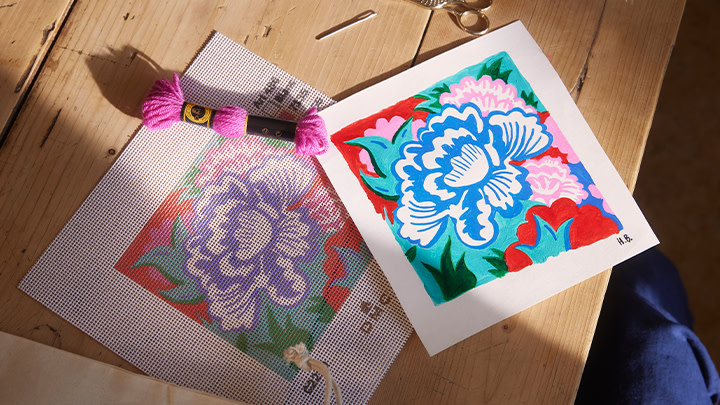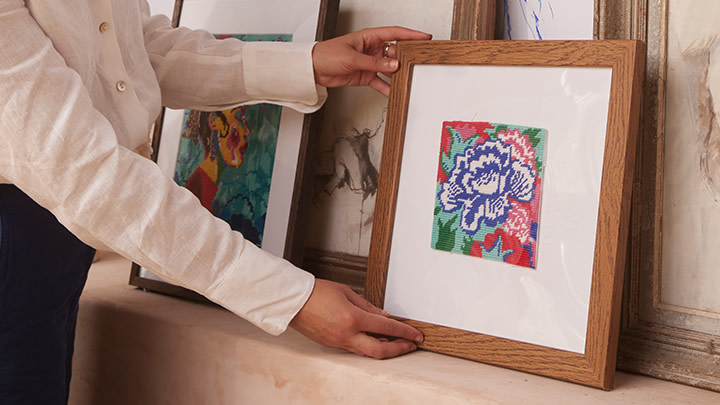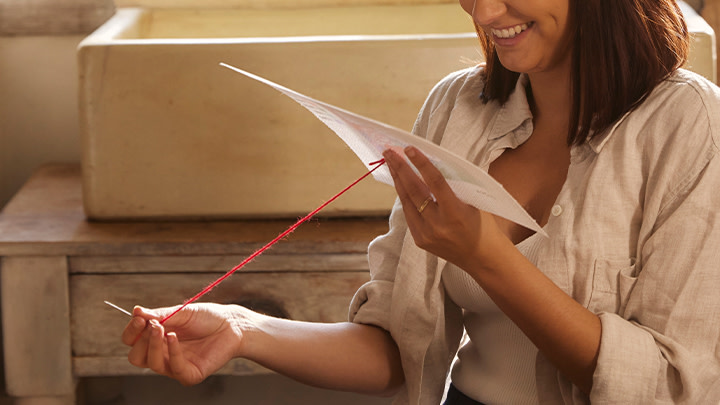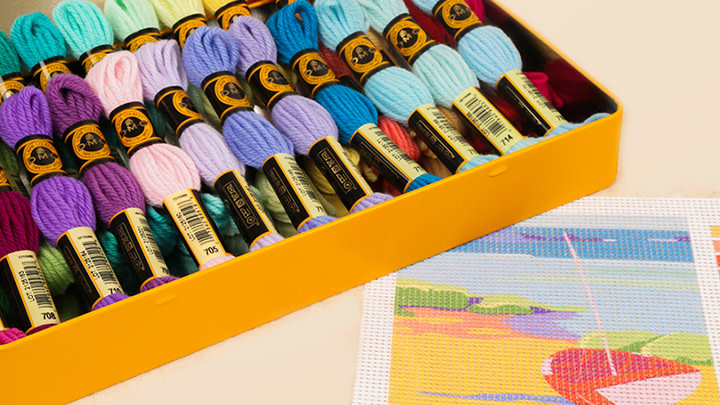La tappezzeria è una tecnica di ricamo molto rilassante e adatta ai principianti. La tela su cui si lavora, si chiama canovaccio, aiuta a realizzare punti regolari e uniformi e il disegno è solitamente dipinto o stampato, quindi non ci sono schemi complicati da seguire. In questo articolo ti spieghiamo i diversi tipi di canovaccio che potrai usare.
Perché il canovaccio è importante?
La tappezzeria esiste da secoli e ha decorato le pareti e le case di famiglie reali e nobili di tutto il mondo. Sia la tappezzeria che il ricamo su canovaccio sono forme di ricamo a fili contati da realizzare su una tela rigida a trama aperta, il canovaccio, usando un ago con punta arrotondata, detto senza punta. La maggior parte dei disegni copre completamente la superficie del canovaccio e sono disponibili un'ampia varietà di punti e schemi. Il grado di dettaglio dipende dal titolo del canovaccio. Molti disegni sono dipinti direttamente sulla sua superficie, ma ci sono anche disegni riportati su schemi, simili al punto croce, dove ogni quadretto dello schema rappresenta un punto. La tappezzeria si lavora su canovacci monofilo, interlock e anche su canovacci a due fili chiamati Penelope/Duo.
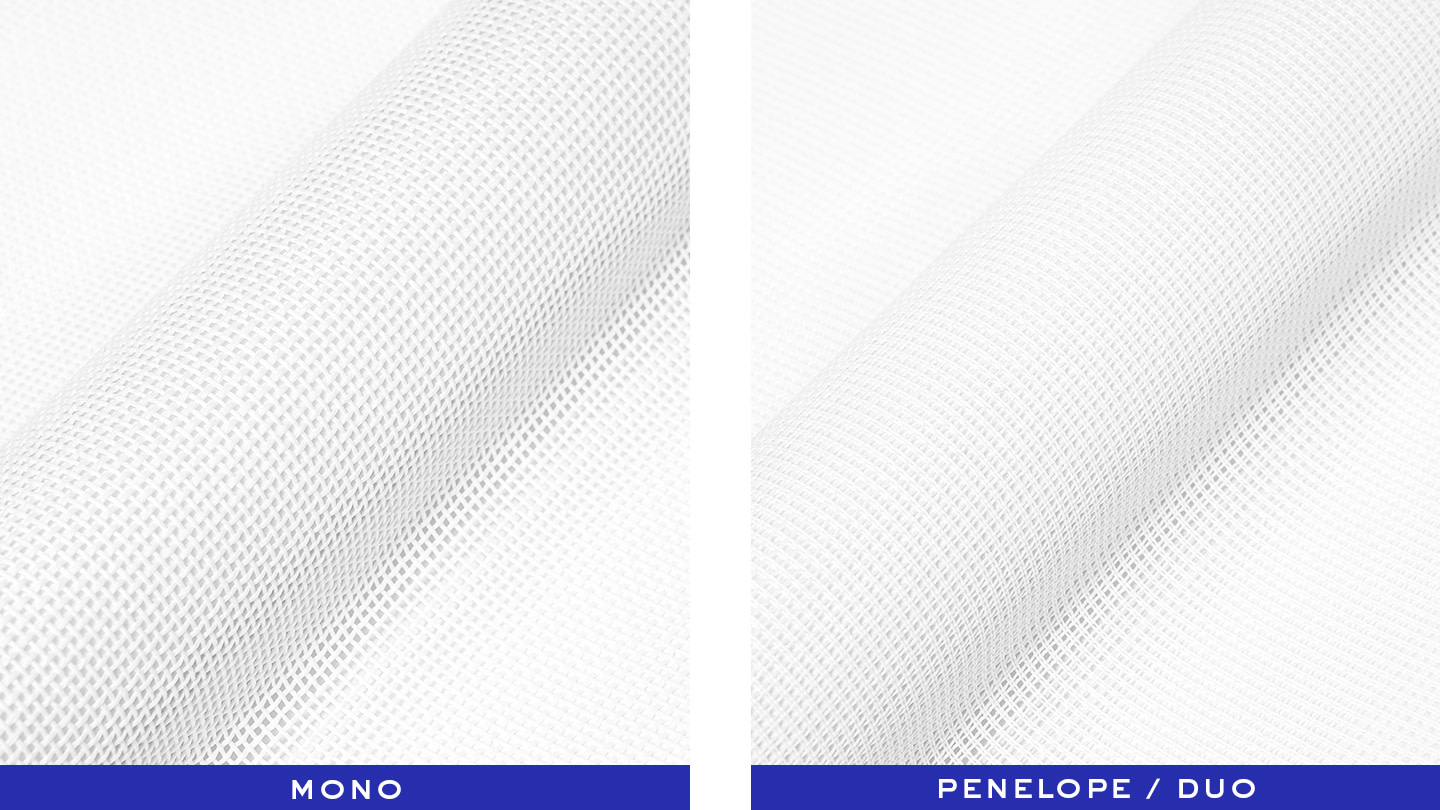
Come si sceglie un canovaccio per tappezzeria
Se acquisti un kit, un canovaccio dipinto o stampato per la tappezzeria, il tipo di tela sarà stato scelto da altri. Ecco i tipi di canovacci più diffusi e il loro utilizzo:
I canovacci Monofilo o Mono sono composti da singoli fili tessuti insieme. I fili hanno uno spessore costante e sono uniformemente distanziati. Ha una certa elasticità, quindi è adatto alla realizzazione di oggetti come i cuscini su cui ci si deve sedere. A causa della sua flessibilità, è necessario usare un telaio per stabilizzarlo mentre si ricama. È disponibile in un'ampia gamma di "titoli": il titolo di un canovaccio si riferisce al numero di fori per pollice o cm. Più alto è il titolo, più piccoli saranno i punti.
Il canovaccio Interlock è tessuto in modo che due fili verticali intrappolino il singolo filo orizzontale "bloccandolo" in ogni intersezione. Questo rende la tela più stabile. È molto popolare nei kit tappezzeria e di solito è disponibile in bianco o marrone.
Il canovaccio Penelope o Duo è un composto da doppi fili intrecciati tra loro che lo rendono molto resistente. Per questa sua resistenza è molto utilizzato nei kit per tappezzeria e per gli articoli per la casa. È disponibile in un'ampia gamma di "titoli" e, poiché si può ricamare prendendo entrambi i fili oppure su uno solo, il titolo viene talvolta indicato con due numeri, ad esempio 5/10. Il secondo numero si riferisce al numero di punti per pollice o cm che si possono eseguire quando si lavorano i fili singolarmente.
Quale filato usare con un canovaccio?
Per i tuoi progetti di tappezzeria puoi usare una varietà di filati che vanno dal cotone, alla lana, al rayon e alla seta. DMC offre bellissimi filati per tappezzeria, dal luminoso Cotone Perlé alla morbida Lana Colbert. Tutti i filati DMC sono realizzati con materiali della migliore qualità e tinture resistenti ai colori e allo sbiadimento. Il canovaccio che vuoi usare guida anche la scelta del filato. I filati più spessi, come la Lana Colbert DMC, il Cotone Lanato DMC o il Cotone Perlé n.3, si usano per canovacci con un numero di punti inferiore (meno quadretti per cm o pollice), mentre i filati più fini, come il Cotone Perlé n.5, il Mouliné Spécial o altri filati più fini, si usano per tele con un numero di punti superiore (più quadretti per cm o pollice).

Quale ago devo usare per il mio canovaccio?
Gli aghi per tappezzeria si usano con il canovaccio perché hanno punte arrotondate. Le punte arrotondate passano agevolmente attraverso i fori del canovaccio senza perforare le fibre della tela. La dimensione dell'ago da usare dipende dalla dimensione delle maglie della tela. Ad esempio, un ago sottile si usa per canovacci con intrecci fitti e quindi fori più piccoli, mentre un ago più spesso si usa per canovacci con fori grandi. Scegli un ago che sia adatto al tuo filato e che entri nel canovaccio con un attrito minimo o nullo per il filato. Gli aghi da tappezzeria hanno una dimensione inversamente proporzionale al numero, più grande è il numero, più fine è l'ago. Per canovacci da 8-10 count - utilizzare un ago da tappezzeria di misura 16. Per canovacci da 10-12 count - utilizzare un ago da tappezzeria di misura 18 Per canovacci da 12-14 count - utilizzare un ago da tappezzeria di misura 20 Per canovacci da 16-18 count - utilizzare un ago da tappezzeria di misura 22.
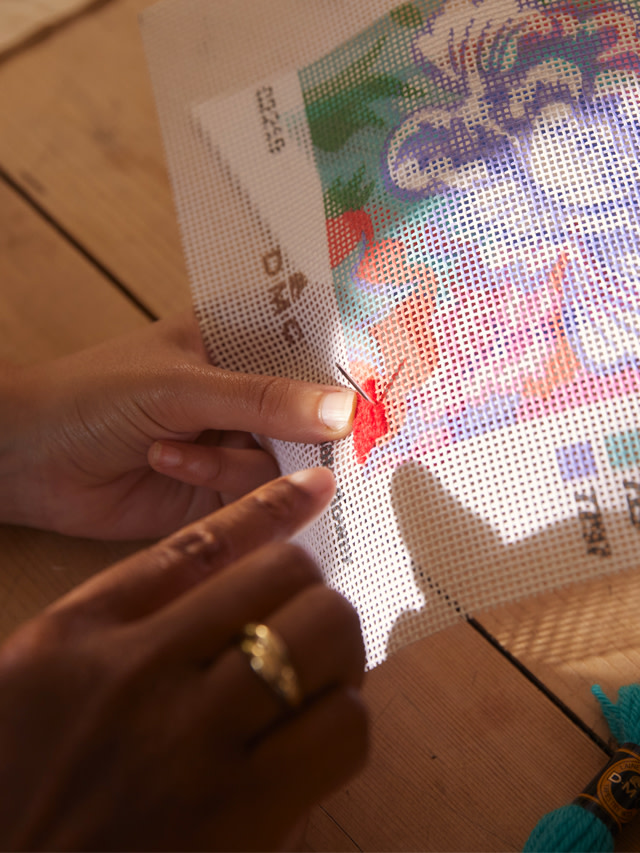
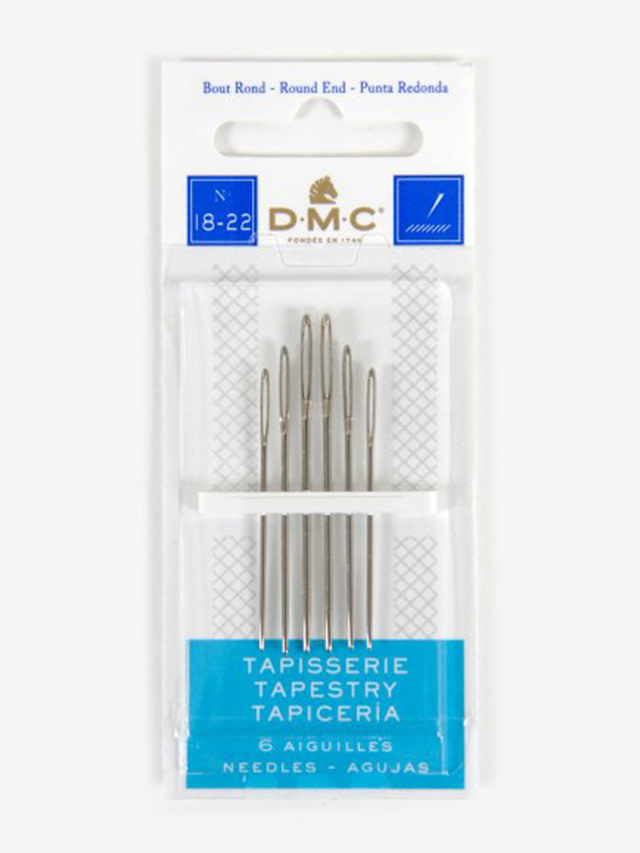
Come si prepara il canovaccio
Ti consigliamo di fermare i bordi del canovaccio con del nastro adesivo prima di iniziare a ricamare. In questo modo eviterai che il canovaccio si sfili e che i fili si impiglino durante il ricamo. È sufficiente tagliare un pezzo di nastro della lunghezza di un lato del canovaccio. Applicare il nastro sul bordo, con metà del nastro sul lato anteriore e metà su quello posteriore. Ripetere l'operazione su tutti e quattro i lati del canovaccio. Se vuoi usare un telaio, ti consigliamo di usare un telaio rettangolare a stagge o a cornice e di montare il canovaccio sul telaio prima di iniziare il ricamo.


